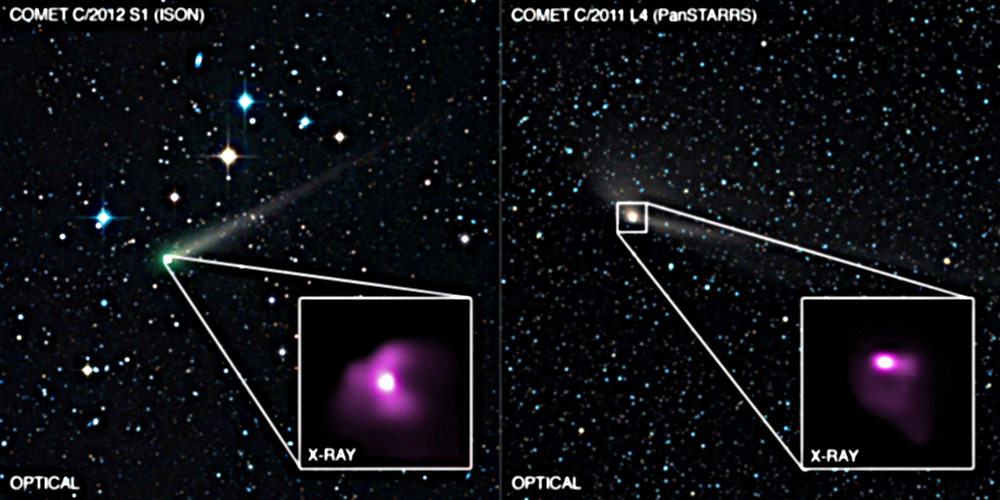
 Credit: NASA/CXC/Univ. of CT/B.Snios et al., Optical: Damian Peach; DSS
Credit: NASA/CXC/Univ. of CT/B.Snios et al., Optical: Damian Peach; DSS
The Sun-Comet Exchange
Comet are big balls of "dirty ice" from deep space. Exquisite observations by the Rosetta mission and its Philae lander, and other space and ground-based observations, have revolutionized our understanding of the composition of comets, their surface features, their variable gas and dust atmospheres, and the roles they may have played bringing water (and perhaps even life?) to earth. Observations of comets can also be used to probe how the Sun's wind helps shape the environment of interplanetary space. Observations with the ROSAT X-ray satellite in the 1990's showed that these frozen bodies produce X-ray emission, and that these X-ray arise from the exchange of electrons between the cold cometary material and solar wind atoms that have lost nearly all of their electrons. In this process, known as charge exchange, the positively-charged solar wind atoms gain electrons from the cold neutral gas atoms coming off the comet. As these captured electrons move from high-energy atomic orbits to lower energy ones, X-ray photons are emitted. The image above shows X-ray emission from two different comets as seen by the Chandra X-ray Observatory. The comet on the left has a gas-rich atmosphere, or coma, and also shows a well-developed X-ray coma; the comet on the right has a dust-rich coma, and shows an fuzzy, unformed X-ray coma. Detailed analysis of the comets' X-ray emission allows astronomers to determine the composition of the solar wind at different times and different locations, and also reveals a mysterious, low-energy X-ray glow associated with each comet.
Published: May 9, 2016
<
HEA Dictionary ● Archive
● Search HEAPOW
● Other Languages
● HEAPOW on Facebook
● Download all Images
● Education ● HEAD
>

Each week the HEASARC
brings you new, exciting and beautiful images from X-ray and Gamma ray
astronomy. Check back each week and be sure to check out the HEAPOW archive!
Page Author: Dr. Michael F. Corcoran
Last modified Tuesday, 27-Feb-2024 10:08:17 EST


